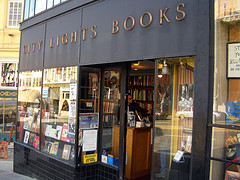Check Your Book’s Comparables
Biff Barnes
If you are an author aiming for commercial success you must approach your book as a business person would. Your book is, after all, a product you wish to sell. One of the first questions to consider is, how have similar books done in the marketplace?
 Courtesy of David Orban under Creative Commons
Courtesy of David Orban under Creative Commons
Michael Larsen, a partner in Larsen-Pomada Literary Agents wrote in Katherine Sands’ excellent book Making the Perfect Pitch:
“The moment you have an exciting idea for a book…
- Check the competition
- Make yourself an expert on your subject by reading the most important competitive books and browsing through others.”
Rachelle Gardner, an agent with the Books and Such Literary Agency, in a recent blog post Know Your Competition offers suggestions on what to include in such a survey of comparables:
- If your book is non-fiction: “Include books on the same topic as yours. Explain in one sentence what that book is about or its strengths; then one or two sentences about how yours is different, better, or a good complement to it.”
- If your book is fiction: Include books that are similar to yours in theme, tone, style and/or genre. If you know of another book with a similar plot, you should address that. Briefly explain why readers of those books will want to read your book, too.
Be selective in the books you include in your list of comparables. Gardner advises, “Include only books with strong sales (not flops and not huge bestsellers) and only books released in the last few years.”
Your list of comparables will be a valuable resource whether you are writing a pitch letter for a submission package to an agent or traditional publisher or are planning to market a self-published book.
Freelance writer Lynne Garner in a recent post on the Women on Writing Blog titled Researching the Picture Book Market described how studying comparable books helped her successfully publish a children’s book. After examining comparable at both the library and local book stores, she, “… tried to discover if I could see patterns in subject matter, in the way subjects were covered, and in the way sentences were constructed.” When she found them, she, “started to use the patterns I'd found in my own stories. Within months of changing the way I looked at my stories, I fulfilled one of my lifetime ambitions of becoming a published picture book author.”
One important caution as you make your search: finding no comparables is not necessarily a good thing. If you have a genre-bending book like nothing else around traditional publishers may not be interested because their marketing department can’t slot it for booksellers. Buyers are often looking for books like those they have read before. I confess that when I want to relax there’s nothing like a good mystery. Stray too far from your reader’s comfort zone and he may not chose to read your book.
Understanding what both readers and publishers are buying is market research that will serve you well as you seek to craft a book that is successful in the marketplace.